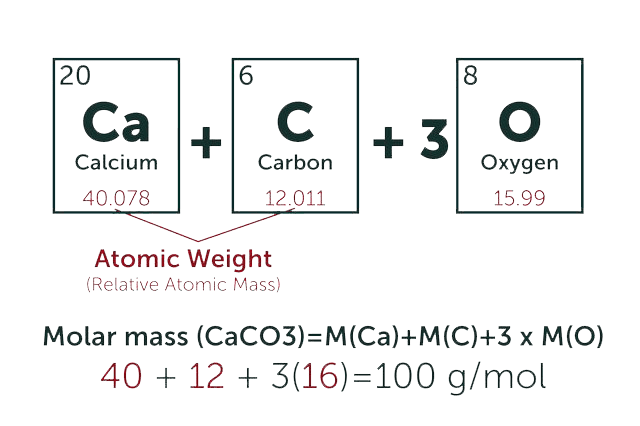Equisetin
* Please be kindly noted products are not for therapeutic use. We do not sell to patients.

| Category | Antibiotics |
| Catalog number | BBF-01702 |
| CAS | 57749-43-6 |
| Molecular Weight | 373.48 |
| Molecular Formula | C22H31NO4 |
| Purity | >98% |
Online Inquiry
Description
Equisetin is an antibiotic produced by Fusarium equiseti NRRL 5537. Activity against gram-positive bacteria.
Specification
| Synonyms | (-)-Equisetin |
| Storage | -20°C |
| IUPAC Name | (3E,5S)-3-[[(1S,2R,4aS,6R,8aR)-1,6-dimethyl-2-[(E)-prop-1-enyl]-4a,5,6,7,8,8a-hexahydro-2H-naphthalen-1-yl]-hydroxymethylidene]-5-(hydroxymethyl)-1-methylpyrrolidine-2,4-dione |
| Canonical SMILES | CC=CC1C=CC2CC(CCC2C1(C)C(=C3C(=O)C(N(C3=O)C)CO)O)C |
| InChI | InChI=1S/C22H31NO4/c1-5-6-15-9-8-14-11-13(2)7-10-16(14)22(15,3)20(26)18-19(25)17(12-24)23(4)21(18)27/h5-6,8-9,13-17,24,26H,7,10-12H2,1-4H3/b6-5+,20-18+/t13-,14-,15-,16-,17+,22-/m1/s1 |
| InChI Key | QNQBPPQLRODXET-AIMHRHHOSA-N |
| Source | Fusarium equiseti |
Properties
| Appearance | White Powder |
| Antibiotic Activity Spectrum | Gram-positive bacteria |
| Boiling Point | 513.6°C at 760 mmHg |
| Melting Point | 65-66°C |
| Density | 1.187 g/cm3 |
| Solubility | Soluble in DMSO |
Reference Reading
1.Quantitation of multiple mycotoxins and cyanogenic glucosides in cassava samples from Tanzania and Rwanda by an LC-MS/MS-based multi-toxin method.
Sulyok M1, Beed F, Boni S, Abass A, Mukunzi A, Krska R. Food Addit Contam Part A Chem Anal Control Expo Risk Assess. 2015;32(4):488-502. doi: 10.1080/19440049.2014.975752. Epub 2014 Nov 14.
A multi-mycotoxin method based on liquid chromatography/tandem mass spectrometry (LC-MS/MS) was used for a mycotoxin survey in 627 samples of processed cassava collected from different districts across Tanzania and Rwanda after the method performance for this matrix had been determined. Matrix effects as well as extraction efficiencies were found to be similar to most other previously investigated matrices with the exception of distinct matrix effects in the negative ionisation mode for early eluting compounds. Limits of detection were far below the regulatory limits set in the European Union for other types of commodities. Relative standard deviations were generally lower than 10% as determined by replicates spiked on two concentration levels. The sample-to-sample variation of the apparent recoveries was determined for 15 individually spiked samples during three different analytical sequences. The related standard deviation was found to be lower than 15% for most of the investigated compounds, thus confirming the applicability of the method for quantitative analysis.
2.Antimicrobial activities of endophytic fungi obtained from the arid zone invasive plant Opuntia dillenii and the isolation of equisetin, from endophytic Fusarium sp.
Ratnaweera PB1,2,3, de Silva ED4, Williams DE5, Andersen RJ6. BMC Complement Altern Med. 2015 Jul 10;15:220. doi: 10.1186/s12906-015-0722-4.
BACKGROUND: Opuntia dillenii is an invasive plant well established in the harsh South-Eastern arid zone of Sri Lanka. Evidence suggests it is likely that the endophytic fungal populations of O. dillenii assist the host in overcoming biotic and abiotic stress by producing biologically active metabolites. With this in mind there is potential to discover novel natural products with useful biological activities from this hitherto poorly investigated source. Consequently, an investigation of the antimicrobial activities of the endophytes of O. dillenii, that occupies a unique ecological niche, may well provide useful leads in the discovery of new pharmaceuticals.
3.Presence of Multiple Mycotoxins and Other Fungal Metabolites in Native Grasses from a Wetland Ecosystem in Argentina Intended for Grazing Cattle.
Nichea MJ1, Palacios SA2, Chiacchiera SM3, Sulyok M4, Krska R5, Chulze SN6, Torres AM7, Ramirez ML8. Toxins (Basel). 2015 Aug 20;7(8):3309-29. doi: 10.3390/toxins7083309.
The aim of this study was to evaluate the occurrence of several fungal metabolites, including mycotoxins in natural grasses (Poaceae) intended for grazing cattle. A total number of 72 and 77 different metabolites were detected on 106 and 69 grass samples collected during 2011 and 2014, respectively. A total of 60 metabolites were found across both years. Among the few mycotoxins considered toxic for ruminants, no samples of natural grasses were contaminated with aflatoxins, ochratoxin A, ergot alkaloids, and gliotoxin, among others. However, we were able to detect important metabolites (toxic to ruminants) such as type A trichothecenes, mainly T-2 toxin and HT-2 toxin (up to 5000 µg/kg each), and zearalenone (up to 2000 µg/kg), all at very high frequencies and levels. Other fungal metabolites that were found to be prevalent were other Fusarium metabolites like beauvericin, equisetin and aurofusarin, metabolites produced by Alternaria spp.
4.A new enzyme involved in the control of the stereochemistry in the decalin formation during equisetin biosynthesis.
Kato N1, Nogawa T1, Hirota H2, Jang JH3, Takahashi S2, Ahn JS3, Osada H4. Biochem Biophys Res Commun. 2015 May 1;460(2):210-5. doi: 10.1016/j.bbrc.2015.03.011. Epub 2015 Mar 11.
Tetramic acid containing a decalin ring such as equisetin and phomasetin is one of the characteristic scaffolds found in fungal bioactive secondary metabolites. Polyketide (PKS)-nonribosomal peptide synthetase (NRPS) hybrid enzyme is responsible for the synthesis of the polyketide scaffold conjugated with an amino acid. PKS-NRPS hybrid complex programs to create structural diversity in the polyketide backbone have begun to be investigated, yet mechanism of control of the stereochemistry in a decalin formation via a Diels-Alder cycloaddition remains uncertain. Here, we demonstrate that fsa2, which showed no homology to genes encoding proteins of known function, in the fsa cluster responsible for equisetin and fusarisetin A biosynthesis in Fusarium sp. FN080326, is involved in the control of stereochemistry in decalin formation via a Diels-Alder reaction in the equisetin biosynthetic pathway.
Recommended Products
| BBF-04624 | Sulbactam Sodium | Inquiry |
| BBF-05877 | Coenzyme Q10 | Inquiry |
| BBF-03819 | Spinosyn A | Inquiry |
| BBF-00574 | Bestatin | Inquiry |
| BBF-05806 | Zeaxanthin | Inquiry |
| BBF-00693 | Ansamitocin P-3 | Inquiry |
Bio Calculators
* Our calculator is based on the following equation:
Concentration (start) x Volume (start) = Concentration (final) x Volume (final)
It is commonly abbreviated as: C1V1 = C2V2
* Total Molecular Weight:
g/mol
Tip: Chemical formula is case sensitive. C22H30N4O √ c22h30n40 ╳


